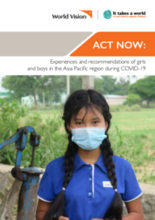Displaying 51 - 60 of 320
During the COVID-19 pandemic, life in residential facilities for people with disabilities in South Korea has become even more precarious, if not deadly, said Lee Jung-ha, who heads the advocacy group Padosan, in an interview for this article from Hankyoreh.
The current study investigated the effects of parental emotional neglect on left-behind children’s externalizing problem behaviors, the mediating role of deviant peer affiliation, and the moderating role of beliefs about adversity in the association between parental emotional neglect and left-behind children’s externalizing problem behaviors.
Using survey data consisting of 5002 eighth graders from 160 middle schools in northwestern China, this paper investigates how parental migration affects children’s non-cognitive abilities, as is measured by Big Five components of conscientiousness, extraversion, neuroticism, agreeableness, and openness, as well as children’s grit.
This article proposes a methodological workflow for data analysis by machine learning techniques that have the possibility to be widely applied in social issues.
This consultation explores children and young people’s views and experiences related to COVID-19 and its secondary impacts.
The authors of this study conducted a large-scale cross-sectional population study of Hong Kong families with children aged 2–12 years. Parents completed an online survey on family demographics, child psychosocial wellbeing, functioning and lifestyle habits, parent–child interactions, and parental stress during school closures due to COVID-19.
To investigate psychopathological consequences for university students who were left-behind children (LBC) and to estimate the effects of one or both parents being migrants, the duration of left-behind experience, and parental absence during critical periods of growth on psychiatric morbidity, the authors of this study conducted an annual survey of all freshmen at a Chinese university from 2014 to 2018.
The present study aims to explore the associations between grandparenting styles and childhood depression, as well as the mediating role of childhood food insecurity on the focal associations among Chinese rural left-behind children.
This study employed a life-course perspective to reveal the dynamic developmental trajectories and concealed protective factors among college students with left-behind experience.
"Argued as being a way to save innocent lives, Japan’s first ever 'Baby Hatch' was established with nothing but good intentions," says this article from Metropolis. "However, a system that essentially allows parents to renounce their parenthood and anonymously give away their child raises questions of ethics, financial priorities and of what is thought to be the best interests of the child."

